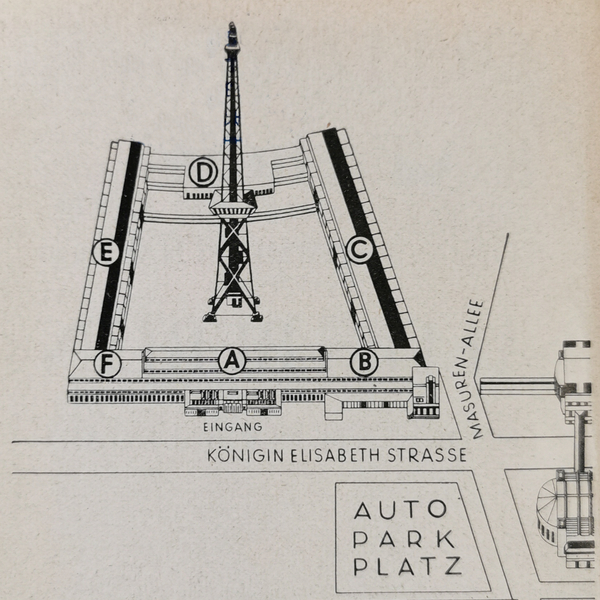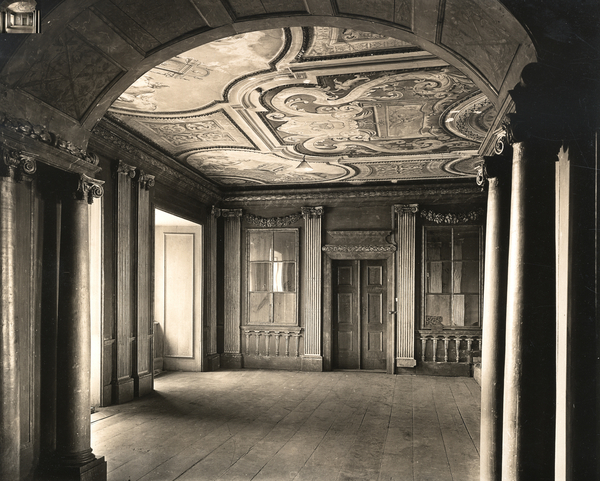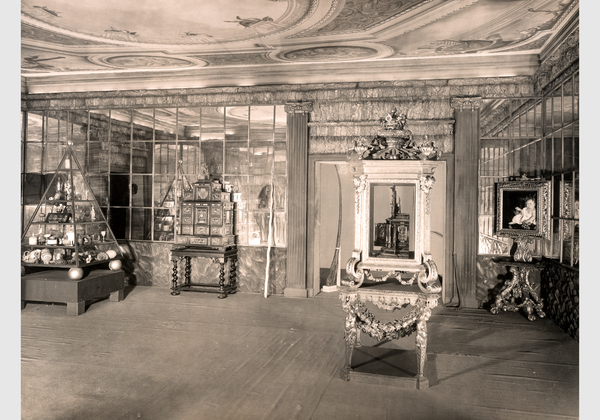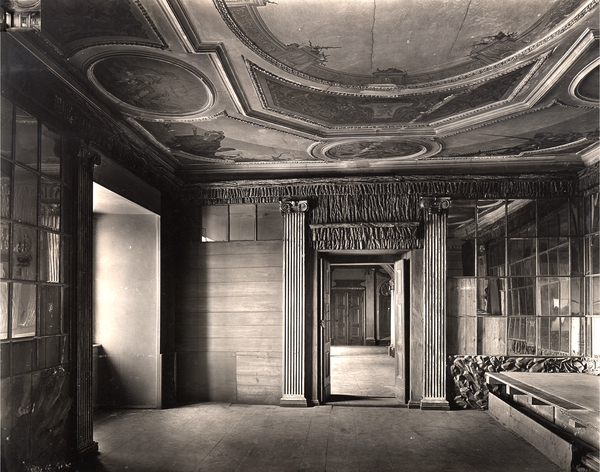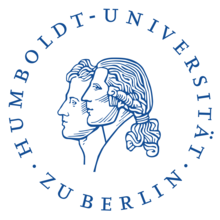Retrospective under the Radio Tower
In 1930, the Berlin Kunstkammer became the focus of a special exhibition for the first time. The occasion was the 100th anniversary of the Staatliche Museen zu Berlin and the rediscovery by Otto Reichl of the former collection rooms in the palace.
The exhibition Altes Berlin – Fundamente der Weltstadt (Old Berlin – Foundations of the Metropolis) was on view from May 23 to August 3, 1930, in the spacious halls of the Radio Tower grounds and showcased the city’s development into an economic and cultural hub. Three of the 146 rooms of the exhibition were devoted to the Brandenburg-Prussian Kunstkammer as the nucleus of the Berlin museums, and were designed by scene builders as elaborate reconstructions of the collection rooms in the palace: the Model Cabinet (Room 992), the Instrument Cabinet (Room 991), and the Naturalia Cabinet (Room 990). Photographs have survived of two of the exhibition rooms, the Instrument Cabinet and the Naturalia Cabinet.
Since visitors to the exhibition were permitted to enter the rooms, relatively few objects were displayed. The exhibits in the Instrument and Naturalia Cabinets included objects that were documented as having belonged to the Kunstkammer, such as stag antlers grown into a tree stump or the statue of Cupid Carving His Bow by François Duquesnoy. In the interest of a supposedly authentic atmosphere, no text panels were included, and visitors seemed quite taken with the presentation:
In the vitrines there was the colorful chaos that we know from the inventories of old collections; objects of nature and objects of art from all domains were intermixed; in every corner you could see something different and surprising. From the behavior of the public it was clear that the old kind of museum that is not so strictly specialized would still be popular even today. (Otto Reichl, “Die Staatlichen Museen auf der Ausstellung ‘Alt-Berlin’,” Berliner Museen 52, no. 1 [1931]: 16).
At that time, a Kunstkammer was still viewed as a kind of hodgepodge, and its complex order was not recognized—the result, to some extent, of the broad reception of Julius von Schlosser’s 1908 publication Die Kunst- und Wunderkammern der Spätrenaissance (Art and Curiosity Cabinets of the Late Renaissance).
This exhibition, which represented a milestone not only in the twentieth-century history of the Berlin Kunstkammer, but also in museum exhibition practice for the early modern collection type, would have been inconceivable without Otto Reichl. He compiled the scattered archival sources for the Kunstkammer, searched for the collection rooms that had been forgotten, and recognized the cultural and historical value of the surviving room decoration. The exhibition of the Berlin Kunstkammer in the halls of the Radio Tower in 1930 was intended as a preliminary stage for a permanent reconstruction in the palace, which would thus constitute a second example alongside the Cabinet of Artifacts and Natural Curiosities in the Francke Foundations in Halle. This plan, however, remained unrealized. Due to his Jewish roots, Otto Reichl was persecuted and had to flee into exile in London, leaving his life’s work unfinished. With his departure, the Berlin Kunstkammer passed out of awareness for decades.
Sarah Wagner
For more on the exhibition of 1930, see
Sarah Wagner, 1930: Retrospective under the Radio Tower – The Exhibition as a Medium of Reconstruction, in The Berlin Kunstkammer: Collection History in Object Biographies from the Sixteenth to the Twenty-First Century (Petersberg: Imhof, 2023).
